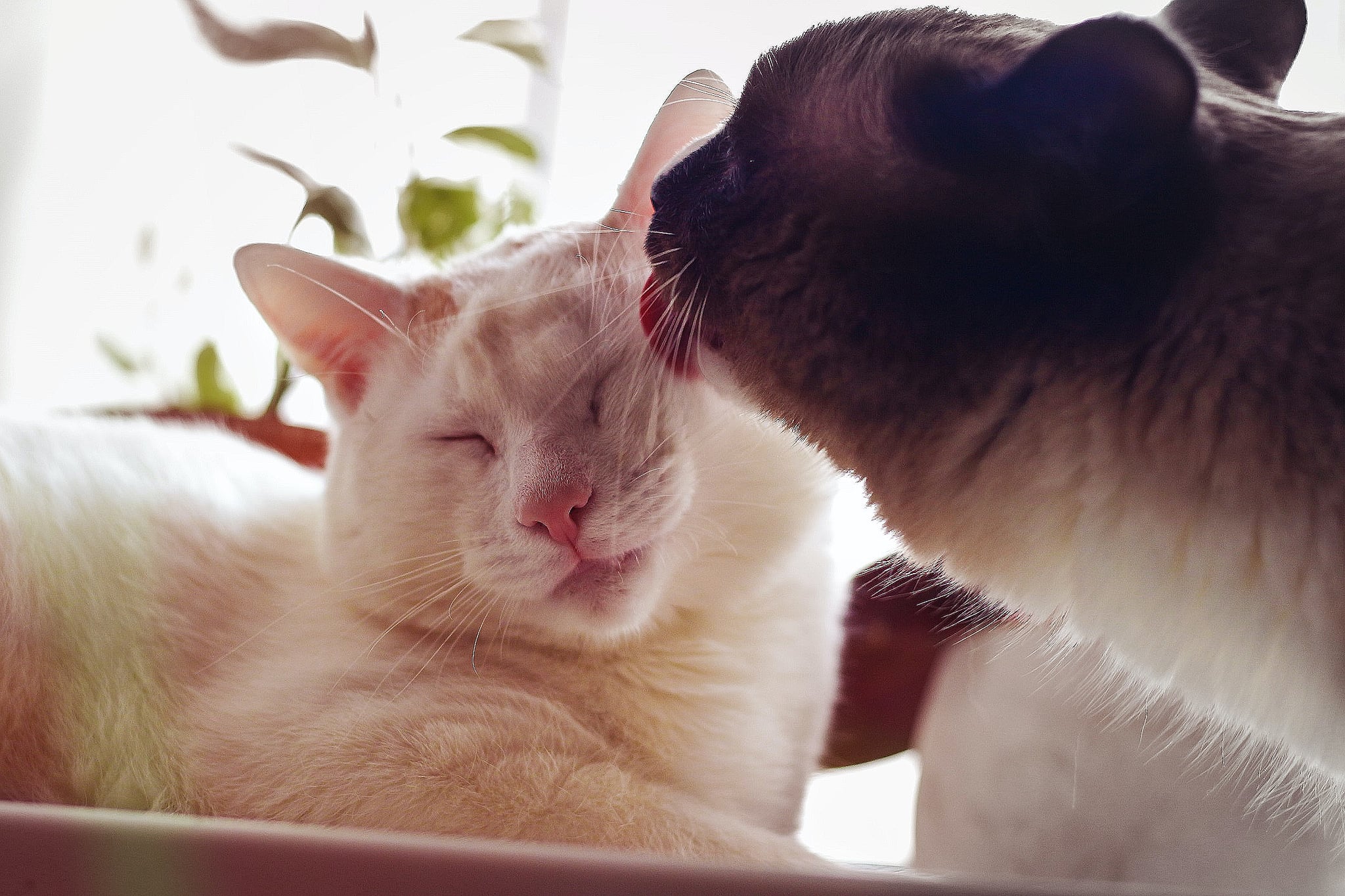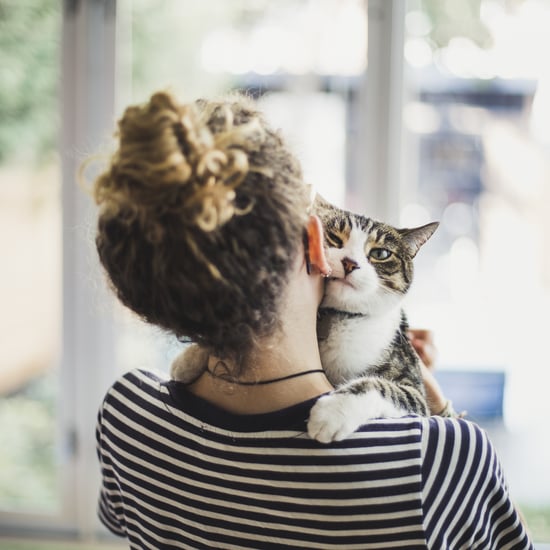Why Do Cats Clean Each Other?
Is It Normal For My Cats to Groom Each Other? Two Cat Experts Weigh In

After my cat got surgery on her tail, she was forced to wear a cone around her neck to prevent her from licking her stitches. Not only was it an uncomfortable experience for her, it was also extremely frustrating, because cats typically spend around 30-50 percent of their day grooming, according to the Feline Health Centre at Cornell University. Cat grooming is as functional as it is social, and that's why cats self-groom as much as they allogroom — a behavioural term that refers to the act of cats, or any animal species, grooming another member of their clan. So why exactly do cats do this? Two animal experts explained the answer to POPSUGAR.
1. It establishes a hierarchy in a multicat household.
Have you ever noticed that your cats will sometimes hiss at each other, then immediately proceed to groom each other? Cats tend to be moody, but the reason for this behaviour has more to do with establishing dominance. Feral cats and domestic cats alike are territorial creatures, and with territory comes a social hierarchy, even inside your house. In terms of grooming, animal ecologist Dr. Ruud Van den Bos, PhD, explained that it's "a way for cats to redirect pent-up aggression and to reaffirm dominance in a way that's far better than doing so through aggressive and even violent behaviours."
2. It's an instinctual sign of affection and protection.
Dr. Van den Bos also explained cats are taught from the moment they are born that grooming is a group activity. "This behavioural pattern would occur in groups under conditions in which it may be necessary to maintain bonds, in case of cooperative defence of resources, or communal nursing and raising of kittens," Dr. Van den Bos said. Right after they are born, a mother cat will begin grooming her kittens because ecologically speaking, the smells associated with a newborn kitten draw attention from predators. Grooming therefore becomes a way of exhibiting maternal affection and protection, and it is feline nature to continue this habit even through adulthood.
3. It's an effective way to clean hard-to-reach spots.
Allogrooming occurs more in overweight and arthritic cats simply because self-grooming is a lot more difficult. "To fully groom themselves — particularly along their topline — cats need to be able to perform astounding contortions. All that flexing and twisting is difficult, if not impossible," Colorado-based veterinarian Dr. Jennifer Coates, DVM pointed out. Allogrooming in this context clearly shows affection between two cats, but it's also a hygienic necessity for the overweight or arthritic one receiving the grooming.
4. It's a means of relaxing and reducing stress.
A cat's level of comfort is built on a routine that is predictable and consistent, meaning cats can easily become stressed and anxious when faced with anything unfamiliar or out of the ordinary. Grooming, especially allogrooming, functions as a coping mechanism for this, because licking releases endorphins. The cat who is initiating the grooming is usually the one in need of soothing, but cats will often take turns as well. Interestingly enough, it's almost always the male cats that initiate the grooming — more than 90 percent of the time, according to Dr. Van den Bos.
5. It's a cure for boredom.
Boredom, unfortunately, is a huge part of a cat's daily life, and sometimes allogrooming is just something to do to keep busy. "Outdoor cats spend much of their time hunting, avoiding danger, climbing, scratching, marking their territories, and just observing the world in which they live," Dr. Coates said. "Without access to these activities, indoor cats can become bored." There's only so much sleeping that a cat can do, and if an owner isn't there to play with them or let them explore the backyard, things get boring pretty fast. As a result, cats will sometimes turn to allogrooming to cure their boredom.
Watch carefully for excessive grooming, as it may be a sign of an underlying skin issue, but for the most part, grooming and allogrooming is simply what cats do to socialise. Just as dogs like to run around at the dog park, sniff each other's butts, and wag their tails, cats have their own ways of socialising, which Dr. Coates described as a "low-intensity level of social contact." If you live in a multicat household, you'll find that some of your cats are more social, while others are more introverted, and allogrooming can be a very telling indicator.


